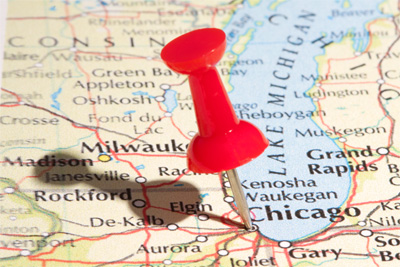Click here for property listings
Stats
- § Cost of living below the national average
- § City, County and State AAA bond ratings
- § Average of 700 airline flights daily
- § 8,850 new jobs for 2011
- § $14.3 billion in annual retail sales
- § First: Best place for companies to thrive
- § First: America’s most livable communities
- § First: Top metro for economic growth
- § First: top state business climate
- § First: economic strength ranking
- § Second: largest banking center (controls over $2.3 trillion in assets)
- § Second: Best place to move
- § Second: best city for entrepreneurs
- § Second: Best place to start a small business
- § Third: Best city for corporate headquarters
- § Third: Best city for business
- § Fourth best city for relocating singles
- § Eighth in number of Fortune 500 headquarters
- § Sixth largest in-migration of people
- § Sixth most active airport in the nation
- § 18th largest city
Geographic
Charlotte means many things to many people — Southern hospitality, the second-largest banking center in the country, a city of trees, home of major-league sports teams, a “can-do” city filled with big dreams and friendly neighbors.
Charlotte is home to 695,995 people; Mecklenburg County, where Charlotte is located, totals 902,803. Still more people reside nearby. With 6.9 million residents within 100 miles, Charlotte lies at the heart of a region that is the sixth largest urban area in the United States.
Charlotte, like much of the southeastern United States, has a humid subtropical climate, with four distinct seasons. Winters are short and generally cool, with a January daily average of 41.3 °F (5.167 °C). Summers are hot and humid, with a daily average in July of 79.6 °F (26.4 °C).
Transport
Charlotte is served by an excellent state and federal highway network, including major north-south and east-west interstate arteries, and a modern, expanded international airport terminal. In addition, ten major and eight regional airlines offer direct and nonstop daily flights to 170 cities. International travelers appreciate the nonstop flights to 35 different cities, including Dublin, Frankfurt, Munich, London, Paris, Toronto, Madrid, Mexico City, Rio de Janeiro, Rome and the Caribbean. Each year over 34 million passengers fly through Charlotte Douglas International Airport. The airport’s aircraft activity ranks it the seventh most active air transportation center in the world.
Education
Serving 133,600 students, the Charlotte-Mecklenburg school system is the largest in the Carolinas and is the 23rd largest in the nation. Student achievement test results are consistently above the national average at all grade levels. The district’s Family Choice Plan allows parents to choose which school their child will attend. Offerings range from traditional school settings to magnet schools with specialized curriculum.
In addition, the Charlotte area has an outstanding system of higher education. The Charlotte area are fortunate to have 35 colleges and universities that serve over 179,695 students. The University of North Carolina at Charlotte is considered to be one of the best education values available. Central Piedmont Community College is one of the top five two-year institutions in the country.
Living in Charlotte
Both companies and individuals are attracted to the thriving Charlotte region. Booming with economic and commercial activity, Charlotte has all the advantages of one of the most rapidly growing metropolitan areas in the nation. Yet the people are warm and friendly and many areas still retain their small town flavor.
Charlotte neighborhoods have it all. Some Charlotte neighborhoods offer the hustle and bustle of urban living, while others provide the slow, peaceful setting of the suburbs. People can be seen jogging, shopping, gardening or chatting on a bench along the sidewalks of the tree-lined streets of the Queen City. Children are often seen playing in the same neighborhood where retired couples gather for a game of cards.
Charlotte neighborhoods have a friendly and livable atmosphere. Not surprisingly, Charlotte was the top pick for “Most Livable City” by the Partners for Livable Communities. The Partners also commended Charlotte on its strong leadership and regional planning. With a strong road network and mass transit options, the average commute time is only 24.8 minutes.
This inviting atmosphere of Charlotte continues to attract newcomers. Charlotte ranked as the number 1 moving destination in 2004, based on the American Movers and Storage Association (AMSA). There are so many benefits of living in Charlotte that are unequaled anywhere else. Charlotte has been rated as one of the top places to live in America based on many quality of life factors, the variety of housing options and affordability. Charlotte’s affordability shines when compared with other markets.
Charlotte has been ranked as one of the hottest and most affordable housing markets by U.S. News & World Report. The Carolina Multiple Listing Services, Inc. (CMLS) reports the median sales price of $198,600 for a home in the Charlotte region.
A strong school system, impressive city services, and moderate household operating costs are just a few of the benefits of Charlotte neighborhoods. Utility costs are extremely competitive with other parts of the nation. The pleasant climate, abundant business opportunities and high quality of life in Charlotte continue to attract newcomers. In response, a large number of new neighborhoods offering modern amenities and ease of living have been developed. The Charlotte area has many new home communities in a variety of styles, price ranges and living environments.
In the center city, residents can choose sleek high-rise condos or historic Victorian homes. Getting around is simple, thanks to highly networked streets and roads, two interstate systems, and mass transit options.
Charlotte provides nearly unlimited choices of housing to suit any lifestyle, budget or other requirement. Whether close to the city or nestled in the suburbs, from historic homes to modern apartments and condominiums, newcomers can find the perfect place to call home.
Charlotte’s Economy & Demographics
Charlotte has been perceived as a banking town for many years. While it is true that Charlotte is the nation’s second-largest banking center, finance is not the largest industry or employment sector. This industry diversification along with a world-ranked international airport, low cost of doing business and superior quality of life lead companies to move and expand here.
Manufacturing, healthcare and the energy industry are key components of the Charlotte business community. Charlotte is known for being a can-do town. The public and private sectors have come together numerous times to work toward what is best for Charlotte. That partnership has helped build a strong sense of community.
A major indicator of a city’s economic strength and stability is the presence of Fortune 500 operations. The Fortune 500 list is compiled each year by Fortune magazine by ranking the annual revenues of large national and multinational corporations headquartered in the United States.
Charlotte is renowned for its vibrant banking sector. With more than $2.3 trillion in assets, it is the second largest financial center in the nation, behind only New York. By comparison, Atlanta has assets of only $182 billion and Boston $151 billion. Bank of America, the nation’s largest bank is headquartered here. In total, 26 banks with more than 226 local branches, as well as a Federal Reserve Branch, are located in Charlotte.
Charlotte is also a major manufacturing force. Mecklenburg County has 1,150 producers generating an annual payroll of $3.1 billion. The region has an additional 3,371 manufacturers that employ over 110,000 workers. Every major manufacturing sector is represented including industrial machinery and metal working industries, along with computer and electronic products and bio-medical facilities.
Click here for property listings
QUICK FACTS
City:
Charlotte (city)
County:
Mecklenburg County
State:
North Carolina
Population count 2011 est.
751,087
Population , percent change, April 1, 2010 to July 1, 2011
2.7%
People 65 and over, 2010
8.5%
Mean travel time to work (minutes), 2007-2011
24.2
Housing units, 2010
319,918
Homeownership rate, 2007-2011
58.7%
Housing units in multi-unit structures, 2007-2011
33.5%
Median value of owner-occupied housing units, 2007-2011
$174,100
Households, 2007-2011
287,302
Persons per household, 2007-2011
2.47
Median household income, 2007-2011
$53,146
Total number of firms, 2007
68,564
Land area in square miles, 2010
297.68
Persons per square mile, 2010
2,457.1


